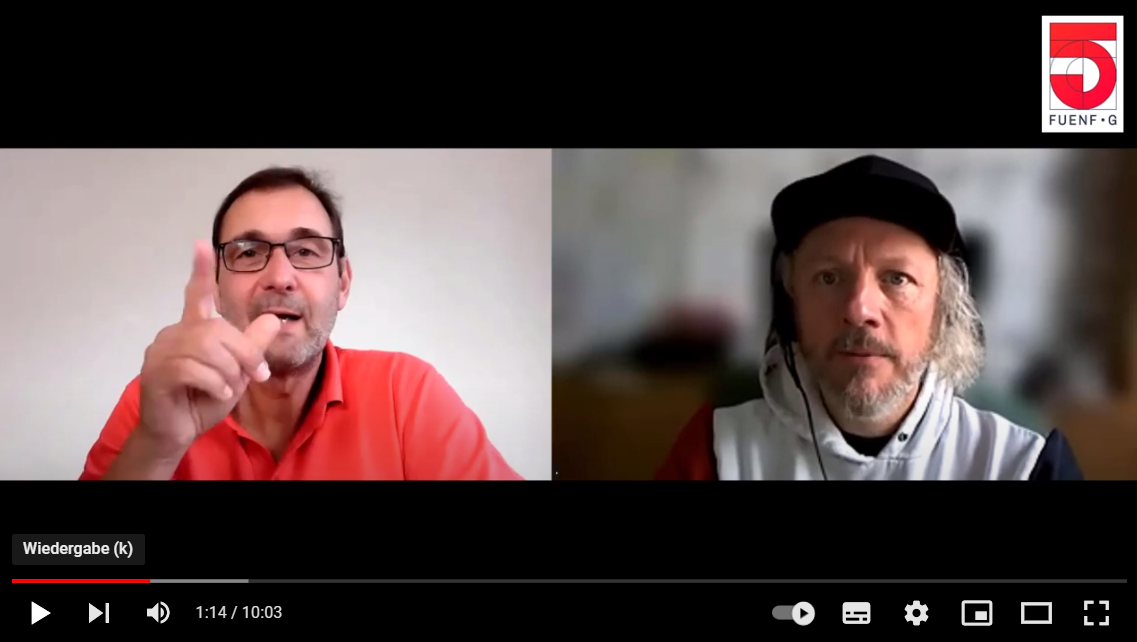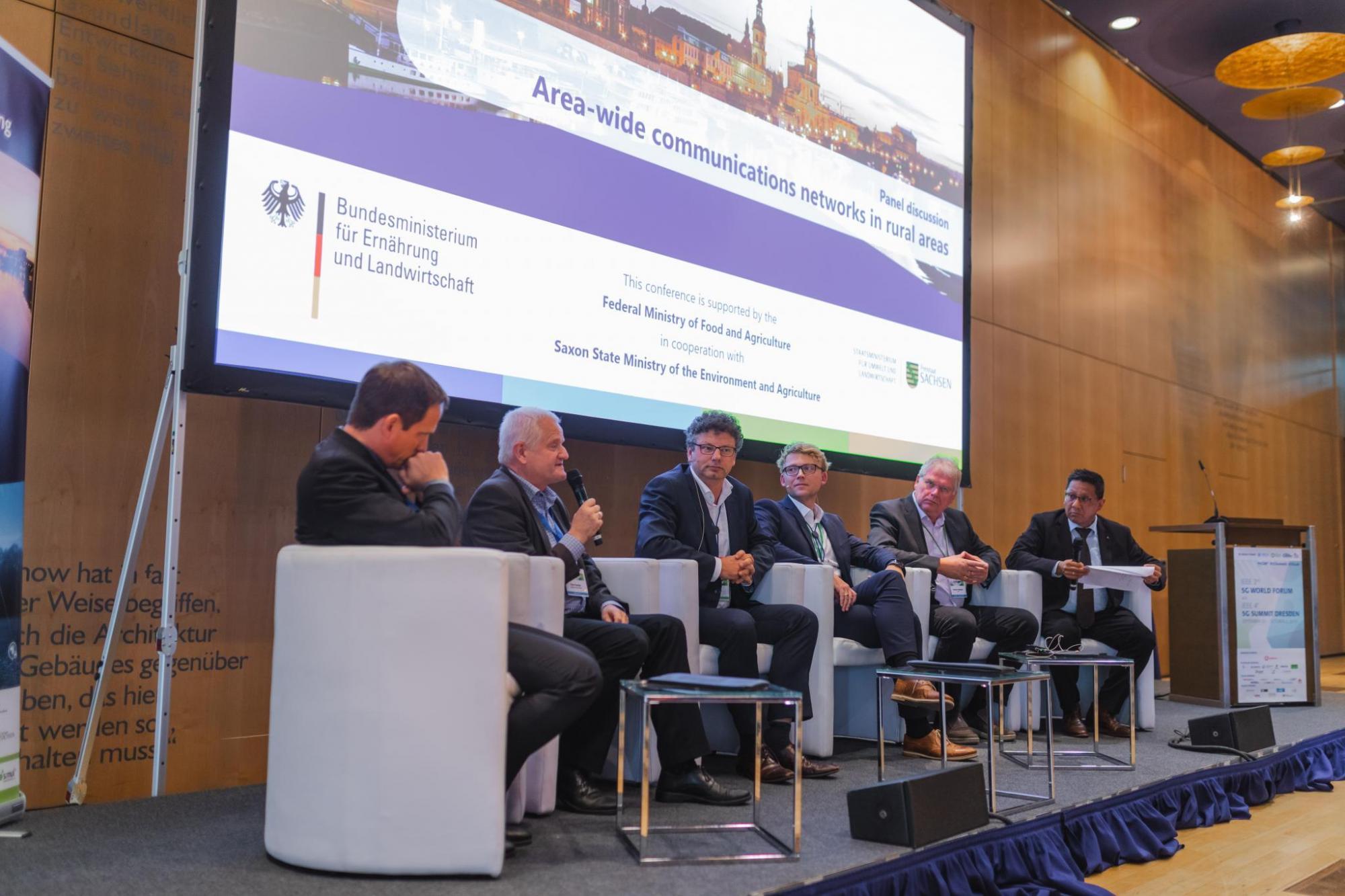Sponsor article

A discussion paper of various associations and the 5G Lab Germany Dresden takes up the question how exactly the frequencies in the 2 GHz and 3.6 GHz ranges should be allocated. The aim must be to supply different settlement structures fairly.
In rural areas – in contrast to urban or semi-urban areas – initially only a single network is required. Under this assumption, the existing network operator in each rural area will be given the full bandwidth of 300 MHz (3400-3700MHz) of the new 5G frequencies for the rural area to be served, which will reduce expansion costs and significantly improve network performance. In return, it must allow national roaming by the other two national network operators. The auction design should be based on this requirement.
The approach discussed here is based on the following assessment: Assuming the use of the existing infrastructure as well as the 300 MHz wide frequency band of 3,400-3,700 MHz and using new technological procedures (e.g. massive MIMO) and infrastructures (e.g. towers of wind power plants), the following extrapolation results: Approximately 240,000 km2 of rural areas are assumed, of which approx. 114,000 km2 are wooded areas whose coverage with 5G mobile radio would hardly be manageable for technical reasons.
We estimate that the remaining 125,000 km2 require at most one additional new base station location per 10 km2. This results in a maximum demand of 12,500 new base station locations. Assuming costs of 600,000 euros per site construction including fiber optic connection, a maximum of 7.5 billion euros would be needed for nationwide network expansion in rural areas. In addition, the network operators would have to migrate the existing infrastructure to 5G.
Auction design
The auctioning of the frequencies should take place in two steps. In a first step, all rural areas should be “auctioned off “at negative prices”, and in a second step the lucrative areas should be auctioned off at market prices.
1. First step – the “investment commitment auction” for “non-lucrative” areas
In a first step, the national grid operators should only “auction off” the non-lucrative rural areas. For this purpose, the entire rural area should be divided into a number of so-called “lead regions” divisible by three.
This “auction” is equivalent to a commitment to the nationwide roll-out of 5G networks in the “auctioned lead regions”, subject to minimum requirements, and thus to a mandatory investment by national operators in 5G network roll-out in non-lucrative regions. For this reason, this first phase of the auction is also referred to as the “Investment Commitment Auction”.
Here is a first suggestion for a possible execution: In a first auction run one (or more) lead region(s) can be allocated to each network operator by drawing lots. Thereafter, in each subsequent round, each network operator “bids” for one more lead region each. If two (or three) network operators choose the same lead region, the network operator receives the region whose geographical center is closest to its previous lead regions (distance principle). This is intended to achieve a concentration of neighbouring regions per network operator. If the distances are equal, the decision is made by lot.
The network operator losing here may then select a lead region, which is not farther away from his previous portfolio than the distance by which the network operator winning in the round received the lead region. With two losing network operators, because all three bid for the same lead region, both losers may select a new lead region according to this principle and with equality of the selected region the same procedure starts for them.
This investment obligation auction will only end when all (previously defined and demarcated) rural areas (lead regions) are distributed among the three network operators, so that one network operator is responsible for the network construction in a defined area. The network operators commit themselves with the preceding “auction” to develop the network with priority in the respective area.
The supply guarantee for this could be structured as follows: to supply 98 percent of the geographical area (excluding forest areas) with at least 10 Mbit/s and 5 ms latency1 within 3 years (until the beginning of 2023). By 2025, a further expansion must then take place to supply 99 percent of the geographical area (excluding forest areas) with at least 30 Mbit/s and 1 ms latency.
The supply is to be provided explicitly through the construction of 5G networks, not through the construction of 2G to 4G networks. However, it should be possible to use existing and expandable infrastructure for this purpose.
The supply guarantee must be implemented by the operators in an easily measurable and verifiable way so that all relevant players can always check whether the capacity of the 5G network in the lead region is sufficiently dimensioned. Mobile users, for example with the help of a mobile app of the BNetzA, the broadband competence centers of the federal states as well as the BNetzA itself should be able to check at any time how the quality of supply is effectively in a lead region.
As a possible punishment for breach of supply is proposed:
A substantial fine is due (e.g. EUR 50T per km2 of the underserved lead region per year) and the license on the frequencies of the Digital Dividend 3 of the underserved lead region expires if the coverage shortage is not remedied within 6 months.
2. Second step – the auction of the “lucrative” areas
In a second auction step, the lucrative urban and semi-urban areas will be auctioned off according to the usual procedure (already in preparation). In this process, the license revenues will only flow temporarily to the federal government, as the network operators will be granted the right to reclaim the license fees as described below. At the end of the auction each network operator will have “his” nationwide 5G frequencies. Excluded from this are the lead regions. Here, a network operator who is not the exclusive network operator of the respective lead region after auction step 1 will only receive the right to reclaim its nationwide frequencies purchased at auction from 2025 onwards, if it can comply with the supply obligation applicable at that time (see explanation of the supply obligation under step 1) in the entire lead region to be considered.
Each network operator is thus given a “time lead” until the beginning of 2025 in its respective “lead” regions.
3. Rückforderungsrecht der Lizenzausgaben der Netzbetreiber
Um die Netz-Güte im ländlichen Raum zu verbessern, werden die Vorsprungregionen eingerichtet, in denen jeweils ein Netzbetreiber mindestens 5 Jahre Vorsprung erhält. Um den Ausbau im ländlichen Raum weiterhin zu befördern, werden dem Netzbetreiber alle Ausgaben für den 5G-Ausbau in seinen Vorsprungregionen – abzüglich Abschreibungen – zurückerstattet bis zu dem Betrag, den der jeweilige Netzbetreiber für den 2. Schritt der Versteigerung ausgeben musste (Cash-Back). Hierbei werden quartalsweise Abrechnungen vorzulegen sein (z.B. äquivalent der Abrechnung zur Projektförderung beim BMBF oder BMWi). Es werden nur die entstandenen Ausgaben rückerstattet, die in Vorsprungregionen für den 5G-Netzausbau relevant waren, und nur für bis Ende 2023 verausgabte Kosten. Mit Kosten sind sowohl die für das Funkzugangsnetz als auch die für die (Glasfaser) Anbindung der Basisstationen entstandene Aus-gaben gemeint.
Eine Verzinsung der Lizenzausgaben durch den Bund wird es nicht geben.
4. Framework conditions for the award
The framework conditions for frequency auctions should provide market participants with sufficient investment and planning security, create incentives for nationwide network expansion and at the same time be open enough to support future market developments. The following framework conditions should be taken into account when allocating frequencies in the 2 GHz and 3.6 GHz ranges:
- National roaming in the lead regions. This right to national roaming is limited purely to the network operators participating in the auction: The network operator that sets up the initial network in its lead region must make it available to others for national roaming for an unlimited period of time. This guarantees that every customer “sees” three network operators throughout Germany. However, the right and obligation to national roaming in a lead region expires vis-à-vis a competing network operator as soon as the latter (from 2025 at the earliest) supplies the lead region itself with the 5G frequency bands it acquired “nationwide” in the 2nd auction step. The network operator who wishes to obtain the release of “his” frequencies from the lead operator must comply with the above-mentioned regulation on minimum supply in the lead region.
- Marginal competition is made possible through the establishment of “local and regional networks”. For these, there is no national roaming obligation on the part of national mobile network operators. Local/regional network operators who are allocated a license in the bands 3,700-3,800 MHz or 26 GHz are given access to the telecommunications network/Internet equivalent to a fixed network operator. Local/regional network operators offer local/regional mobile and fixed networks, which are connected to the Internet and “feed-in fees” are the same as for local fixed network connections. National roaming is not obligatory in order not to undermine the business model of the three national mobile phone operators for the expansion of rural areas. Coverage of rural areas is a top priority.
- Frequency bands already available to the respective network operator may also be used to comply with the coverage obligation in the lead regions.
- The temporary shared use of frequencies in the 3,400-3,800 MHz band, as proposed in the BNetzA’s “Consultation on the local and regional provision of the 3,700 MHz to 3,800 MHz frequency range for wireless network access”, is supported.
- After a 5-year period (early 2025), the other network operators in the lead regions will also be allowed to build their own networks, which one of the three network operators previously “auctioned off”. However, these networks may only commence operations or make offers on the market if they meet the supply requirements in force in the respective overall lead region.
- An increase in the number of national mobile phone operators to four undermines their profitability and thus the financial ability to prioritize network expansion in rural areas. A reduction to two mobile phone operators creates a duopoly or oligopoly and thus reduces the chance of competition for rural areas.
- The shared use of existing infrastructure (such as wind turbines/towers or electricity pylons) must be the rule, not the exception. The federal, state and local authorities must create the best possible conditions for this. This must be available to all network operators, both national mobile phone operators and operators of local or regional networks (e.g. in the 3,700-3,800 MHz band). A limitation of the mast or antenna height in local and regional networks is not reasonable. An example for the setup of a regional network operator could be a construction site, where e.g. the antenna is mounted on a construction crane that is available there. The height of the crane is determined by the “air sovereignty” of the construction site, and thus also guarantees a good local radio coverage. Another example could be a farm that wants to take care of its own fields and use its feed silo to mount the antenna. In both cases, the restriction of the mast or antenna height, for example to a maximum of 10m, is counterproductive.
- During the first 5 years (until early 2025), the initial network operator in the respective rural lead region will receive all new 5G frequency bands in the range of 3,400-3,700 MHz. This excludes frequency bands that are designated for local and regional allocation, as these bands are reserved for the operation of local and regional networks.
- Lead regions may be exchanged between the three national grid operators after the two auction steps have been completed. Payments may also be made between the three national network operators.
- The same rules will apply to the use of frequencies and agreements at the borders of neighboring lead regions of different network operators as are currently in force at national borders.
- The federal states and the federal government must undertake to make available a “Digital Dividend 3” with at least 100 MHz bandwidth in the band below 700 MHz from 2025.
- All data rates mentioned here refer to the downlink data rate. Half of the uplink data rate to be achieved applies in each case.
1- Latenz: Ping end-to-end transit time to the next Mobile Edge Cloud Server and back
This discussion paper of the 5G Lab Germany Dresden was initiated by DIHK, DLT, ZDH und DBV.





Leave A Comment